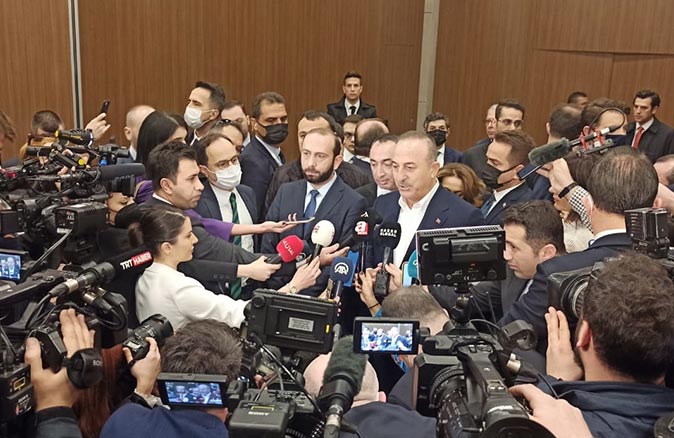“Armenia at Antalya”


RICHARD GIRAGOSIAN/ANTALYA
Joining over some two thousand attendees, including Heads of State and Governments, Ministers of Foreign Affairs and representatives of the International Organizations, Armenian Foreign Minister Ararat Mirzoyan was one of the more popular participants at the Antalya Diplomacy Forum (ADF).
Although much of the Antalya event was focused on the Russian invasion of Ukraine, the Armenian foreign minister was a sought-after guest, with great media interest. The Armenian participation was significant for two main reasons.
First, and most obviously, the arrival of the Armenian foreign minister in Antalya was the first visit of a senior Armenian official in over sixteen years. And after two recent meetings between Armenian and Turkish representatives in Moscow and Vienna, Foreign Minister Mirzoyan advanced the “normalization” process with Turkey with a private bilateral meeting with his Turkish counterpart, Mevlut Cavusoglu. In this context, even without the presence of the Armenian special envoy for the talks with Turkey, Ruben Rubinyan, Mirzoyan was successful in sustaining the momentum of Armenia-Turkey diplomacy.
A second reason for the significance of the Armenian foreign minister’s meeting stems from Armenia’s enhanced strategic significance in regional and global diplomacy. After all, the Antalya Diplomatic Forum was just that- a diplomatic forum that provided a platform for international engagement.
And for Armenia, Foreign Minister Mirzoyan’s bilateral meetings in Antalya with other leaders, including Russian Foreign Minister Sergei Lavrov and the most senior EU foreign policy leader, Joseph Borrell, among others, were as important as his time with Cavusoglu. This also demonstrated Armenia’s position as more of a geopolitical player in terms of wider European security. And at the same time, marks the evolution of Ararat Mirzoyan as foreign minister, allowing him an opportunity to present his own policy and vision for Armenian foreign policy.
What Next?
Yet beyond these two factors, the Antalya meeting between the Armenian and Turkish sides also raises some questions over what to expect.
Looking forward beyond this recent meeting in Antalya, the process of diplomatic reengagement between Armenia and Turkey is now entering a second stage. The first stage was defined by introductory orientation sessions, as the two envoys presented their general points and became acquainted.
But now, the second stage for Armenia and Turkey is a period in need of a specific agenda and a guiding roadmap to advance the process of negotiations.
From this perspective, normalization represents a return to a “normalization” process based on a more modest and practical set of objectives: establishing diplomatic relations and reopening the closed border.
Thus, in this context of diplomatic negotiations between Armenia and Turkey, there are two main expectations through the coming year. First, although the diplomatic process has started quickly, the negotiations are vulnerable to the lingering tension between Armenia and Azerbaijan, marked by attacks and incursions into Armenian territory by Azerbaijani forces and the continued captivity of Armenian prisoners of war and detainees.
A second risk stems from looming elections in Turkey and a serious crisis in Turkish politics, making the outlook for normalization ever more hostage to the course of Turkish domestic politics. Nevertheless, despite this challenging outlook, there is a notable degree of justified optimism, highlighting normalization as a rare positive “game changer” in an otherwise insecure region at risk.
(Richard Giragosian is the Director of the Regional Studies Center (RSC), an independent “think tank” in Yerevan, Armenia)



